What is purple cabbage? And is it healthier than green cabbage? Learn about its vibrant color, unique flavor, and nutritional benefits in this ultimate guide to purple cabbage!
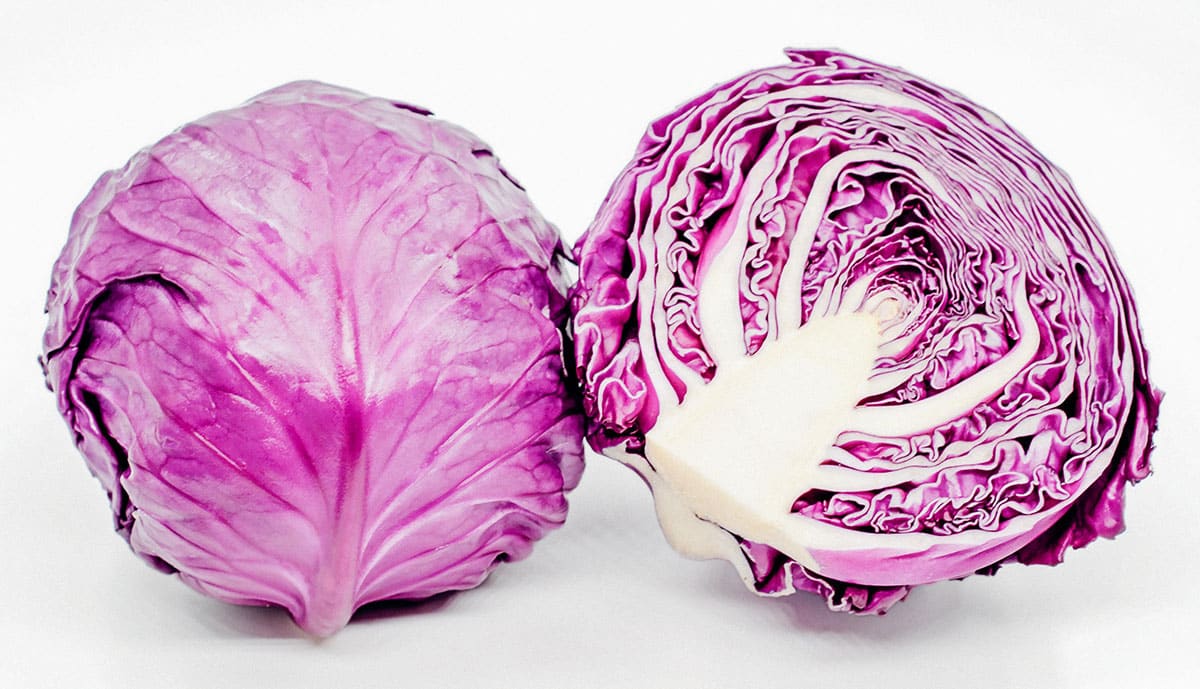
In the world of nutrition, sometimes the most unassuming vegetables pack the mightiest punch. Enter purple cabbage, a humble member of the cruciferous family that’s been overshadowed by its more famous relatives.
But don’t be fooled by its unpretentious appearance. This vibrant veggie is a nutritional powerhouse, brimming with an array of health benefits that might just surprise you. In this article, we’ll uncover the secrets of purple cabbage and share creative ways to incorporate it into your diet. Get ready to elevate your meals and boost your well-being, all with the help of this unsung hero of the vegetable aisle.
Click the links below to jump around, or keep on scrolling to learn all about purple cabbage!
- Origins Of Purple Cabbage
- Appearance & Texture
- Flavor & Aroma
- Best Uses For Purple Cabbage
- Health Benefits Of Purple Cabbage
Origins Of Purple Cabbage
Purple cabbage, also known as red cabbage or red kraut, is believed to have originated in the Mediterranean region, specifically in ancient Rome or Greece.
The cultivation of cabbage spread throughout Europe during the middle ages and eventually reached other parts of the world through exploration and trade. During the 17th and 18th centuries, European immigrants brought cabbage to North America. It quickly became a staple vegetable in colonial America, especially among German and Dutch settlers.
In fact, the term “coleslaw” is derived from the Dutch term “koolsla,” which means “cabbage salad.” Today, purple cabbage is grown in various regions around the world, with China being one of the largest producers.
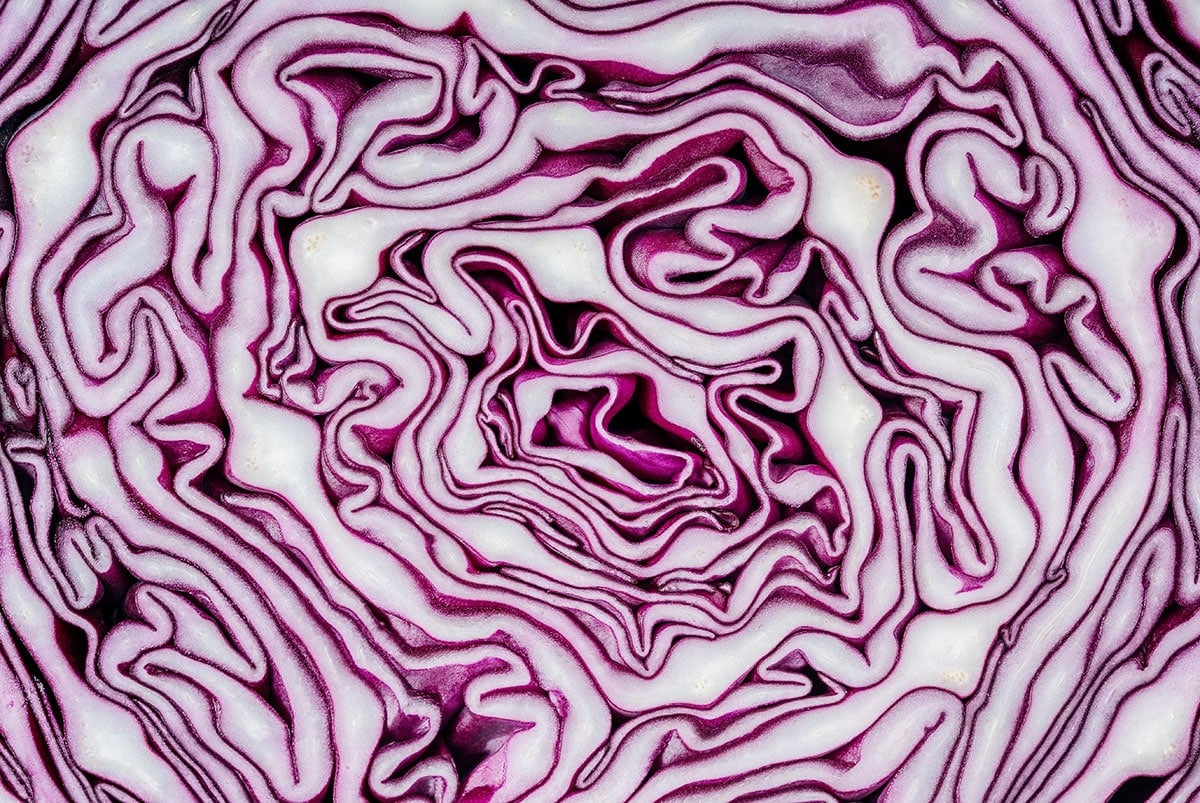
Appearance & Texture
Purple cabbage, as the name suggests, has a vibrant purple or red color with a slightly softer texture than green cabbage. The leaves are also tightly packed but have a more pronounced wrinkled appearance. Its vibrant color easily adds a visual appeal to dishes.
Flavor & Aroma
Purple cabbage has a mild and earthy, but slightly more bitter, flavor than its green cabbage counterpart.
Raw purple cabbage has a slight peppery and mustard-like taste with a hint of sweetness.
As it is cooked, the flavor becomes milder and sweeter. Its vibrant color also adds a visual appeal to dishes.
Best Uses For Purple Cabbage
Salads

Purple cabbage can be shredded or thinly sliced and used in raw salads, adding a splash of color, crunch, and flavor. It pairs well with various dressings and other vegetables like carrots and bell peppers. Give it a try in this Thai cabbage salad
Smoothies
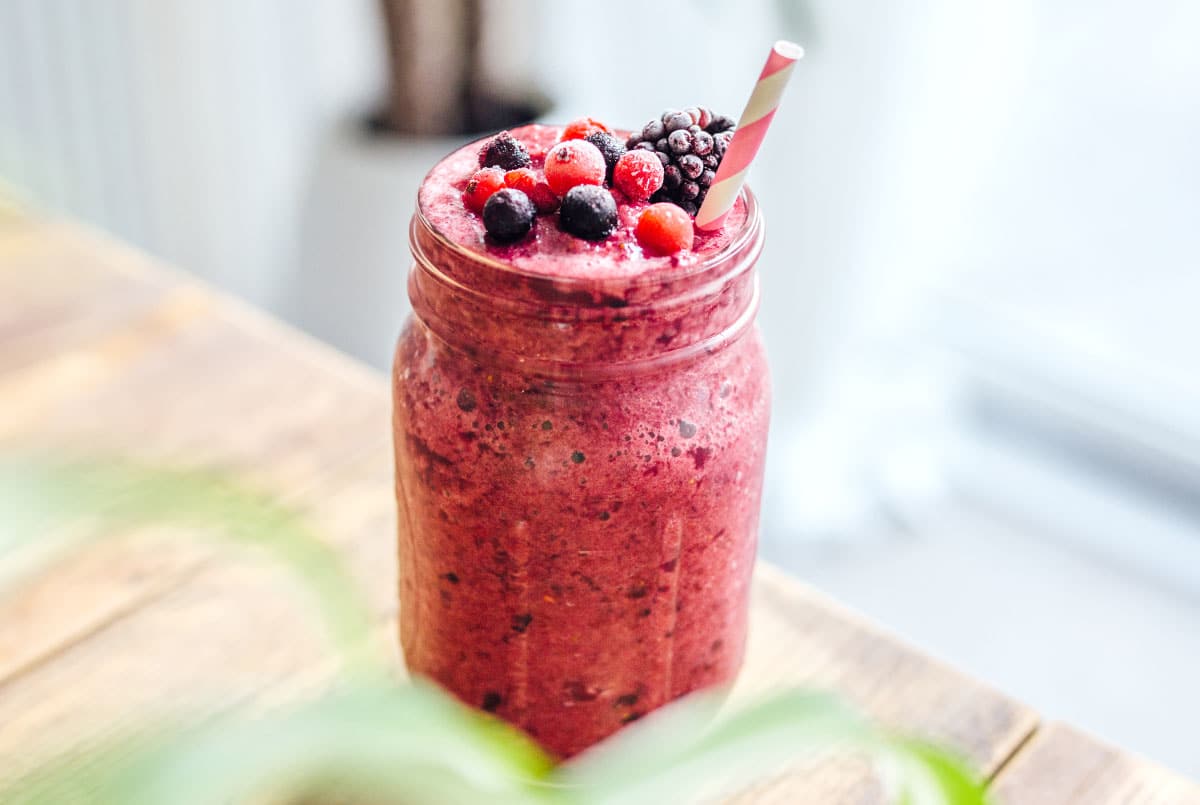
Okay, you just have to trust us on this one, but raw cabbage is a great add to smoothies to add texture, fiber, and a host of other nutritional benefits. Just measure out:
- 1 cup of chopped purple cabbage
- 1 cup of mixed berries (fresh or frozen)
- 1 cup orange juice
- ¼ tsp cinnamon
Put it all in the blender, and blend until smooth. Using frozen berries helps ensure your smoothie is cold as does using refrigerated purple cabbage. Here is the Berry Cabbage Smoothie link with photos and suggestions!
Pickled

Pickling is a great option for purple cabbage and it is really quite easy. We made a whole separate post on this at Pickled Cabbage.
Pickled cabbage adds crunch, color, and a wonderfully zesty flavor to so many dishes. Do your Vegan Sloppy Joes need a little color? A little zest for your Tofu Banh Mi? You could even replace the pickled red onions that fit so well on a charcuterie board with pickled red cabbage to change things up a bit.
Sauerkraut
Homemade sauerkraut with purple cabbage is easy to make, and a bit cheaper than buying it at the grocery. And, of course, you can showcase it in your mason jars with the title “(your name here)’s Famous Purple Sauerkraut”. Just follow the steps in this Homemade Sauerkraut.
Once you have a stock of your own, or you just get it at the store, there is so much you can do with a good Kraut. Some of my favorite recipes include sauerkraut! It just adds an extra layer that amplifies the taste so well.
- Hungarian Unstuffed Cabbage
- Reuben Seitan Sandwich
- Sauerkraut Soup
- White Bean Chili
- Vegetarian Pita Bratwurst
- Sauerkraut Salad
Side Dish
You can also just sauté purple cabbage and serve it as a side. It is great in stir-fries as well as of course any coleslaw recipe. In Germany it is commonly braised and served as a very popular side known as rotkuhl.
Health Benefits Of Purple Cabbage
Purple cabbage has largely the same nutrition profile as green cabbage with one extra benefit. It, like most purple vegetables and blue vegetables is loaded with antioxidants such as anthocyanins and sulforaphane. The level of these can be 4-5 times higher than found in green cabbage!
According to USDA data, 1 cup (89g) of chopped purple cabbage contains only 28 calories, but provides:
- Fiber: 2 grams
- Vitamin C: 56% of the RDA
- Vitamin K: 28% of the RDA
- Vitamin A: 6% of the RDA
- Potassium: 5% of the RDA
- Thiamine: 5% of the RDA
- Riboflavin: 5% of the RDA
Purple cabbage also contains various amounts of other vitamins and micronutrients like calcium, iron, magnesium, etc.
There is also evidence to suggest that purple cabbage may help fight inflammation, provide important heart benefits, help protect against cancer, and assist in diabetes control largely due to the high level of antioxidants it contains.
I say “may help” because as a nutrition professional, I think it important that people understand how difficult it can be to quantify such benefits given the challenges in conducting large studies focusing long term on just a few specific variables. I can assure you, however, that purple cabbage is a nutritional powerhouse
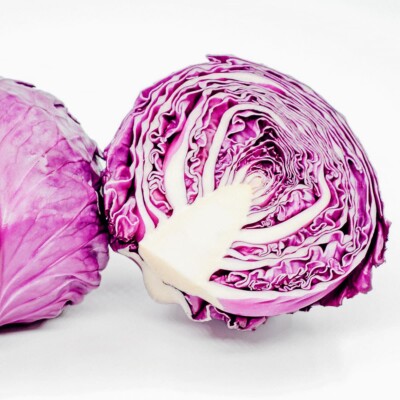
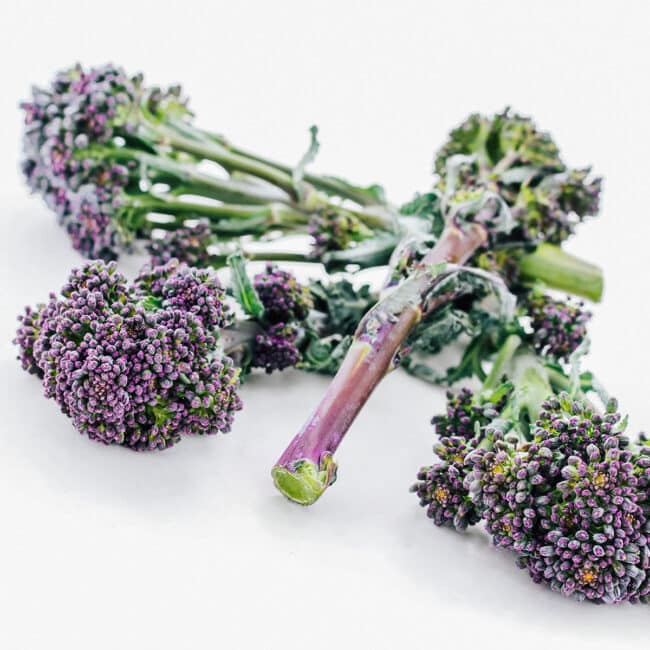
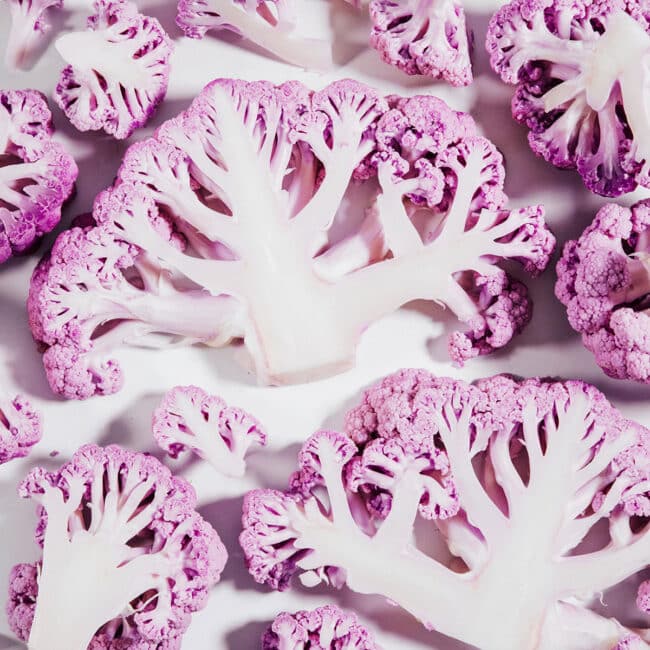
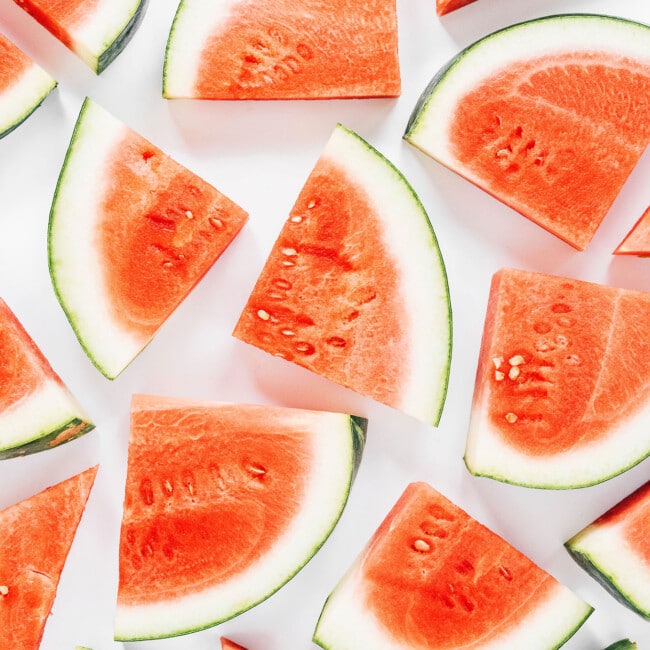
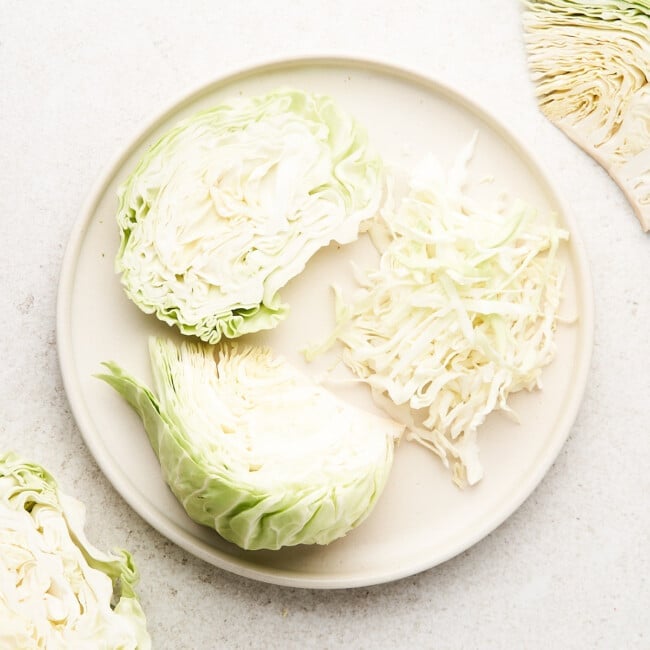
Leave a Comment